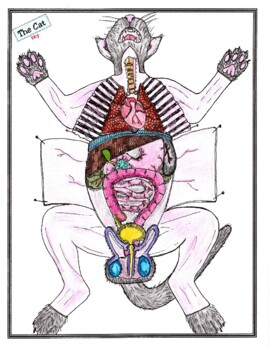Cat Paper Dissection
- PDF
What educators are saying
Description
This paper dissection goes along with my other paper dissections such as the frog and pig. It is a great alternative to a real dissection. It can be given to those students who don't want to dissect or who are absent for the dissection or can be given to the entire class when a real dissection is not an option. It still gives the students the idea of where the organs situated in the body and what organs are dorsal, ventral, etc. Students color the organs, cut them out, glue them into place according to detailed instructions, and then answer questions. These paper dissections are usually popular with the students. You can make it more demanding by adding more difficult questions and simplify it by helping students with any questions they might have. I think your students will enjoy this!





